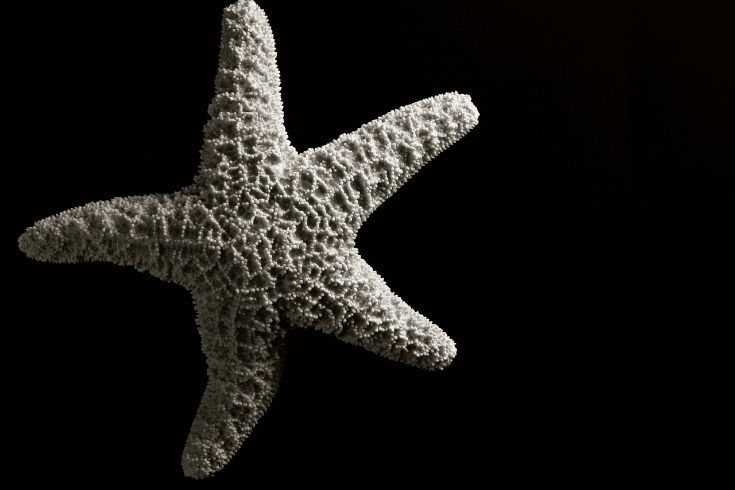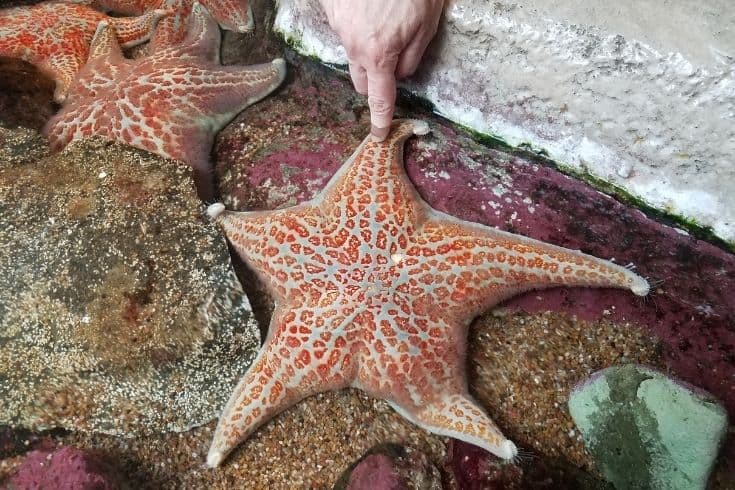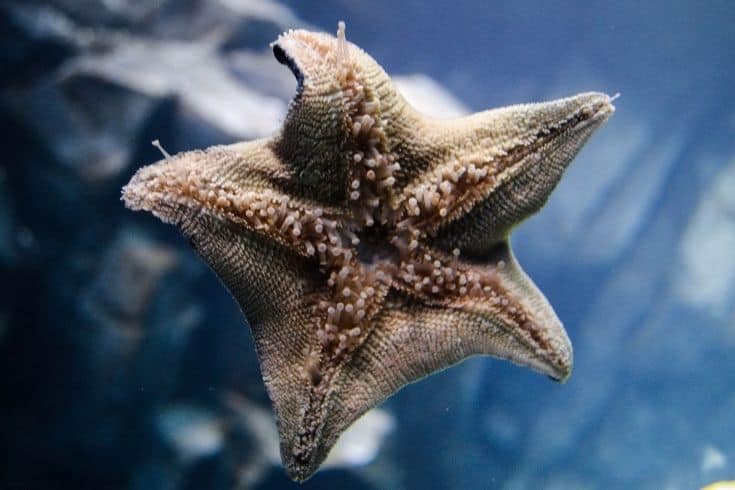Starfishes are about as tough and resilient as tank animals come. They can cling to life for quite a long time, even if one of their arms has been broken off or removed completely.
However, even the hardiest sea creatures succumb to death eventually. Under these circumstances, it is important to learn how to tell if a starfish is dead so that you can take the necessary measures to handle them.
Without further ado, here are several key signs that you should look for:
Shriveled Appearance

When a starfish dies, its body will often shrivel up and become much smaller than it was in life – it may even look as though most of the water has been sucked out of its cells. This process can take a few hours or several days, depending on how long it has been deceased.
This process takes place because sea stars do not have a heart or any other organ that pumps fluid through its body. In order to move around, they must rely on the movement of water inside their bodies. When they die, this process stops and the body becomes dehydrated very quickly as there is no longer anything keeping it moist.
Tiny White Spots Appearing On The Body
Starfish who are dead may begin to develop tiny white spots on their body. Sick starfish also display this symptom, but they occur much more slowly. For instance, you might only observe one spot for days, though the rate at which they appear will usually accelerate after death has occurred.
The spots themselves are simply the skin cells dying faster than they can be replaced by new ones throughout the process of decomposition (which is when their body breaks down into its component parts). The white color comes from an accumulation of fluids in their bodies that leak out once they have died.
Loss Of Muscle Tone And Have A Droopy Appearance
When a sea star dies, its muscles begin to lose their tone and elasticity very quickly. This means that the body becomes limp and floppy – it will no longer be able to hold itself up in an upright position, but will instead hang down. If your pet’s body is still, hanging on a rock or another part of its usual habitat, it may even look as though they’re ‘waving’ at you with their arms!
You can also tell that something has changed when it comes to how the body behaves because of the way it moves in the water. While a healthy starfish will be able to move around much more quickly and easily than a dead one, the latter will tend to drift along with the water rather than moving against it.
Deceased Starfish Will Not Respond To Stimuli

In life, sea stars are extremely sensitive creatures who respond very quickly to all forms of stimuli – including touch! If you pick up your pet, stroke its arms, or touch the tips of its legs, it will react to your attention very quickly. If you are doing all of this after death has occurred, however, your pet won’t respond at all.
Unresponsive starfish that do not respond to stimuli such as these gentle touches and strokes are not just sleeping – they’re dead! You can also tell that your pet is deceased if you touch them and find that their body feels extremely cold, hard, or stiff to the touch.
Decomposition Odor And/Or Slime Coming From The Body
Another sign that a sea star is no longer alive and has begun decomposing is the presence of an unpleasant odor. This is usually accompanied by a strange slime coming from its body, which means that it has begun to rot and decay in earnest.
If you notice any signs like these, then it’s likely that there are some serious internal changes taking place inside their bodies too. You should not attempt to handle a dead specimen with your bare hands, as the slime they produce will most likely contain bacteria that can cause harmful infections.
FAQs
Can Starfish Be Kept In Tanks?

Yes, they can be kept in a healthy tank with the right conditions. In order for them to thrive, you should opt for a mature tank with at least 40 gallons of water. It should also house plenty of live rock, which they will use as shelter and hide behind when they feel threatened. You don’t want stressed starfish on your hands!
What Kind Of Water Should I Use?
These sea creatures only live in saltwater, which can be difficult to access in many cases. Your best bet is to use fresh water in conjunction with a salt mix that is specifically designed for marine invertebrates. This is important so that your pet has all the minerals it requires!
In terms of water quality, your water should be treated to remove chlorine, chloramines, and heavy metals. Do your best to obtain your water from sources with a water permit, as these will best meet your pet’s needs.
See also: Saltwater vs. Freshwater Aquariums
What Should I Feed My Sea Star?

To avoid having a hungry sea star on your hands, it is important to feed them regularly. Common species such as the blue linkia sea star and purple sea star are not picky when it comes to what you feed them, but there are some species that have specific needs.
The green brittle will eat fish food flakes and marine pellets while the leather sea stars prefer a diet of frozen shellfish. These kinds of foods should be cut up into smaller pieces so they can get their mouths around them easily.
Can Starfish Be Kept In A Softie Tank?
Softie tanks describe tanks that house soft corals. For example, an anemone tank is a type of softie tank. Common types of sea stars (such as the blue linkia starfish,) normally require the lighting that is provided by live rock. Softie tanks do not have as much live rock as a reef tanks, which makes it difficult to meet the lighting requirements of these species
However, species such as sand sifting stars or burrowing starfish require significantly less lighting because they live their lives on the sand. These species can be kept in softie tanks as long as there is a sufficient layer of sand to support them, and they are given plenty of space – aim for a 50 gal softie tank with a sand depth of at least four inches.
See Also: Best Places To Buy Soft Corals Online
Conclusion
We hope that you found our guide on how to tell if a starfish is dead useful and that it helped you determine what to do when your pet has died. It’s always best to err on the side of caution, especially where pet safety is concerned!
Did you find our article helpful? If you did, please share it with a fellow marine life enthusiast who might benefit from these tips. We really appreciate your support and will be happy to hear from you in the comments section below!
See also: How To Tell If A Fish Is Dead

Amazing! I only looked this up because I found a starfish on the beach and it was not in the water for a long time I tried to revive it but I didn’t know if it was to late. So now I see the starfish that I found was deceased but I tried 😞